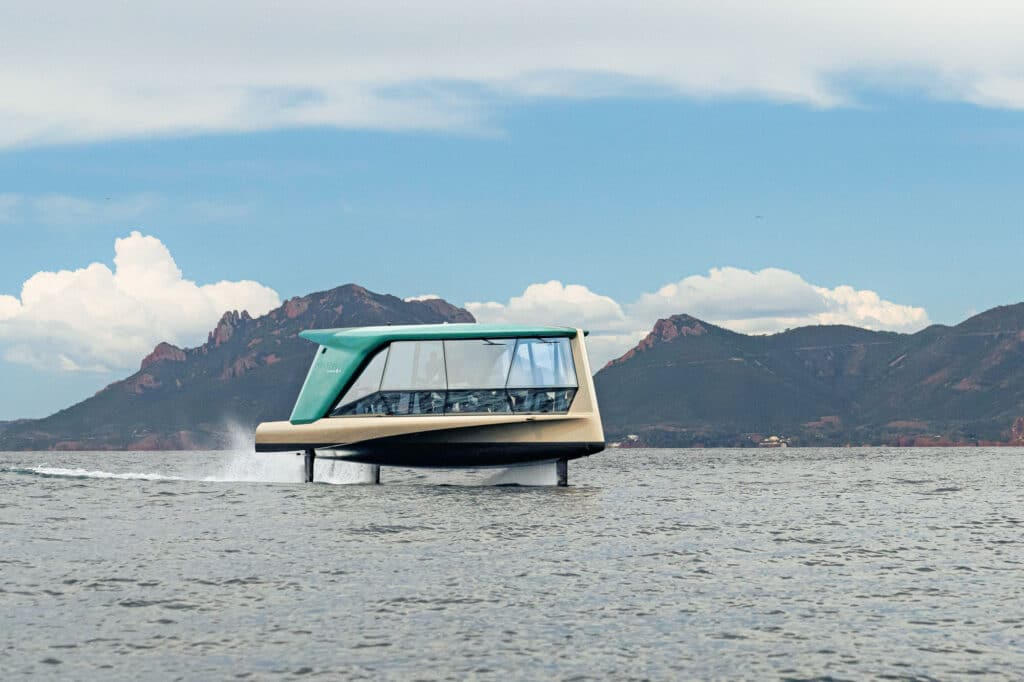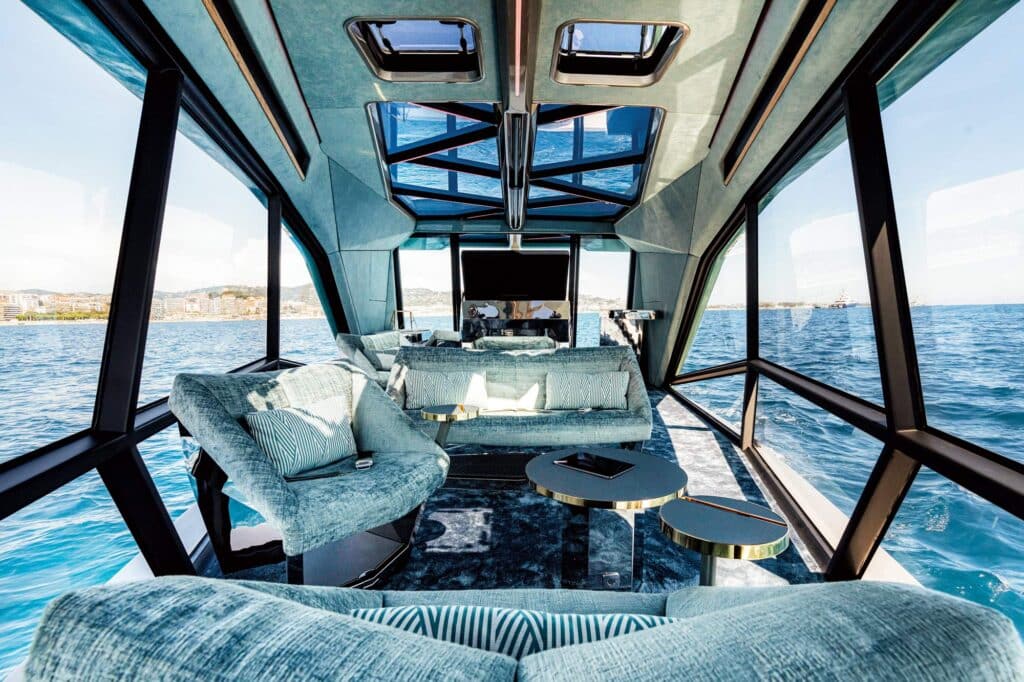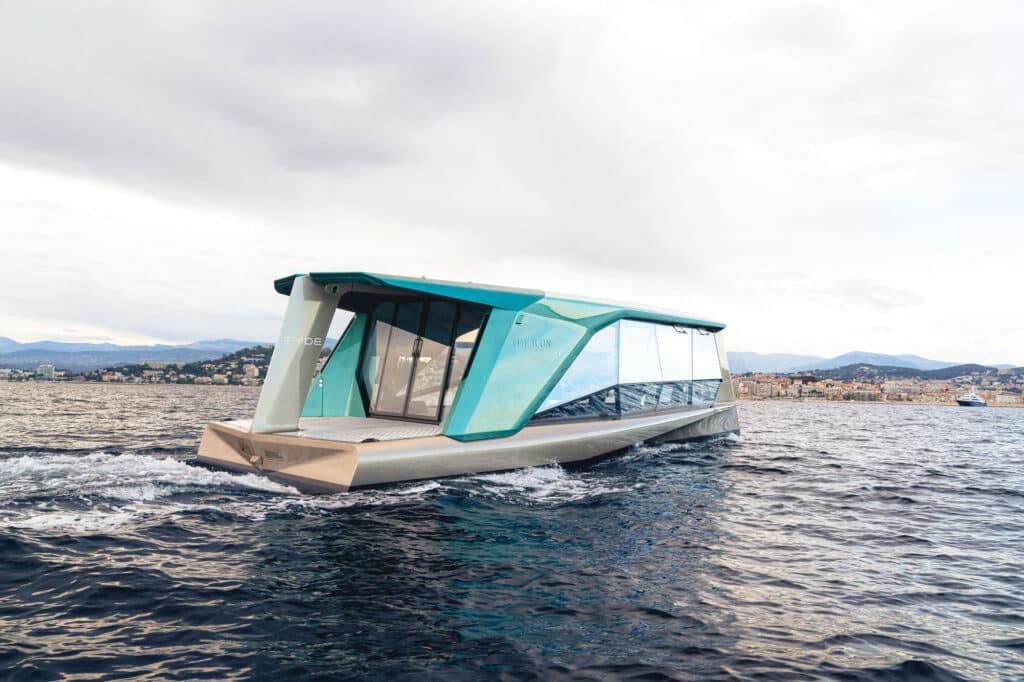
The Icon is BMW and Tyde GmbH’s first foray into the world of electric hydrofoil yachts. The Icon flies above the brine on three hydrofoils. These lift-generating appendages work in concert with the vessel’s twin rudders to balance gravity and centrifugal force while executing turns to yield what Tyde terms “coordinated curve control.”
Christoph Ballin, Tyde’s co-founder and managing director, says the toughest challenge his company faced when creating The Icon involved assembling the right team. While BMW initiated the project’s development and build, and is responsible for the yacht’s luxe interior and exterior design, Tyde’s crux involved bringing cutting-edge marine expertise—including forward-leaning companies and individuals with deep experience with hydrofoils and flight-control systems—to the design table. The magnet? “The concept was convincing,” Ballin says.

Flight control is handled by a centralized foil-control system that Tyde developed with Oceanflight Technologies. The system’s algorithm crunches incoming data from the vessel’s sensors 100 times per second, and it leverages custom-built actuators to articulate the vessel’s hydrofoils.

Power Play
The Icon is powered by dual Torqeedo Deep Blue electric motors that each spin a dedicated contra-rotating propeller. Hull and hydrofoil design was tackled by America’s Cup-winning naval architect Guillaume Verdier; as such, The Icon’s hull contributes to smooth takeoffs and landings. The Icon achieves a (ballpark) 50-nautical-mile range at its 24-knot cruising speed. Top speed is 30 knots.
Take the next step: tyde.one









